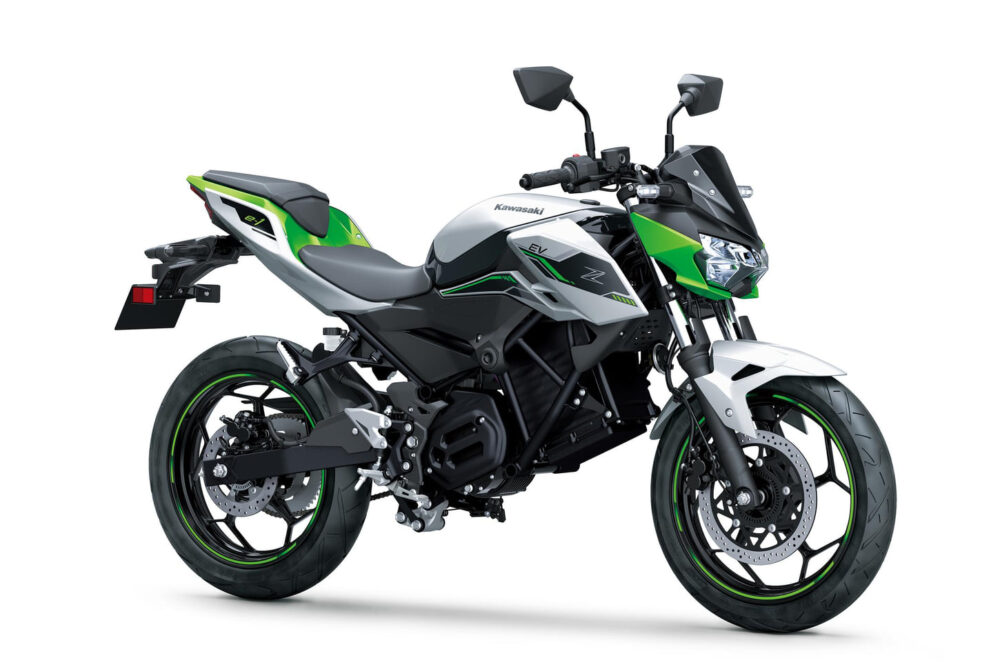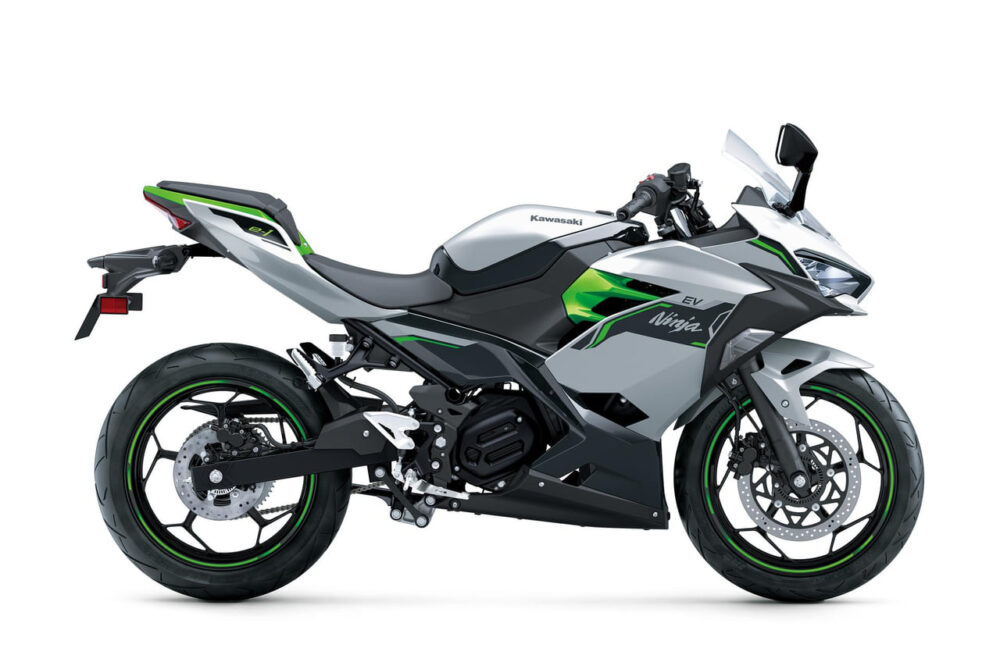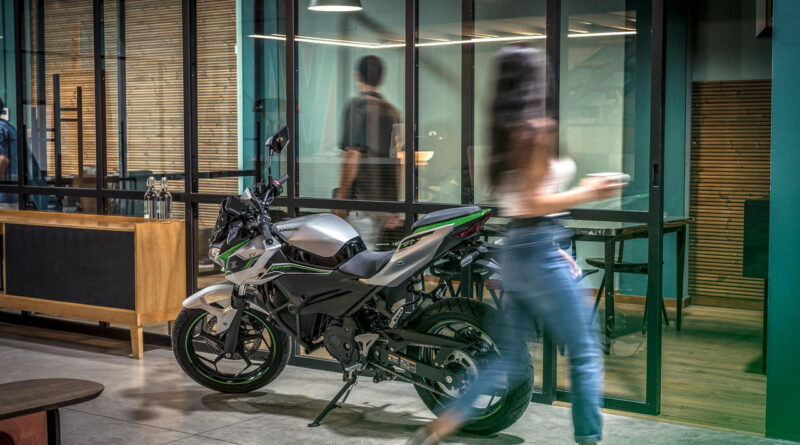New Kawasaki Z e-1 and Ninja e-1 Electric Motorcycle: Urban Revolution on Two Wheels
In the world of motorcycles, Kawasaki is known for its high-performance machines that make enthusiasts’ hearts race. However, Kawasaki’s surprising entry into the electric motorcycle market may leave many of its fans seeking raw power somewhat disappointed.
The new Kawasaki Z e-1 electric motorcycle and its sporty variant, the Ninja e-1, scheduled to arrive in European stores in October, represent a paradigm shift in Kawasaki’s approach.
A Simple Approach to Urban Mobility
Contrary to expectations from a brand famous for its high-octane machines, Kawasaki has opted to create a simple entry-level electric model tailored for urban use and aimed at new riders above 16 years of age.

These electric motorcycles are equivalent to 125 cc models, perfect for urban commuting needs. In Europe, where there exists a specific licensing category for this age group with limited power and speed, these motorcycles fit perfectly.
Electric Power Under the Hood
Despite not being high-performance machines, the Ninja e-1 and Z e-1 from Kawasaki have much to offer. They are propelled by compact, brushless electric motors that provide strong acceleration right from the start.
According to the company, the normal power of the models is 5 kW and the peak power is 9 kW (e-Boost), which allows a maximum speed of up to 99 km/h.
Moreover, power levels can be selected by the rider, contributing to confidence while riding.

An interesting feature is the e-Boost, allowing riders to access higher power for about 15 seconds, providing quicker acceleration. Furthermore, the regenerative system recycles deceleration energy back into the battery, increasing the motorcycles’ range.
Futuristic Styling and Cutting-Edge Technology
Kawasaki hasn’t overlooked its commitment to style and cutting-edge technology. The new electric motorcycles feature an attractive matte silver and lime green color scheme, providing a futuristic and distinctive image for the brand.
The instrumentation is entirely digital, with a 4.3-inch color TFT screen, giving the cockpit a high-tech and high-quality appearance. Additionally, these motorcycles offer wireless connectivity, enhancing the riding experience.
Comfort, Safety, and Reliability
Kawasaki hasn’t compromised on comfort, safety, and reliability with its new electric motorcycles. With front and rear disc brakes, as well as the ABS brake system, stopping is safe and efficient.
The chassis is based on Kawasaki’s Ninja/Z400 motorcycles, offering secure and comfortable handling that riders will find reassuring.

Customizable Riding Options
In addition to the normal riding mode (ROAD), riders can also opt for the limited-speed mode (ECO), which restricts the maximum speed for energy savings. The e-Boost, on the other hand, provides stronger acceleration and a higher top speed for a brief period.
Furthermore, the Modo Walk assists with parking lot maneuvers, making low-speed handling more convenient.
Conclusion
Kawasaki’s entry into the world of electric motorcycles is an exciting development. While these motorcycles may not be the high-performance machines that Kawasaki is known for producing, they offer a simple and affordable approach to urban mobility.
With their futuristic style, cutting-edge technology, and customizable riding options, the Ninja e-1 and Z e-1 have the potential to attract a new generation of urban riders.
The prices of these machines have not yet been revealed, but they are expected to arrive in European dealerships in October.
photos: Kawasaki

